When AI Meets Wireless Communications

Purchased from Istockphoto.com. Copyright.
With the ever-increasing number of smartphones, IoT applications, and connected devices, most of our business has moved on to the Internet. Maintaining a highly reliable, fast wireless connection, to ensure that it runs smoothly, has become a must in our daily lives. Artificial intelligence (AI) anticipates the procurement of smart solutions for a wide variety of complex problems in different domains. Consequently, we provide a reliable mechanism to adapt transmission parameters for a time-varying wireless channel conditions. The proposed mechanism leverages the powers of machine learning techniques in designing reliable, high-throughput WiFi networks. We propose extensions to the existing AI algorithms to address the problem of wireless link adaptation.
What is Link Adaptation?
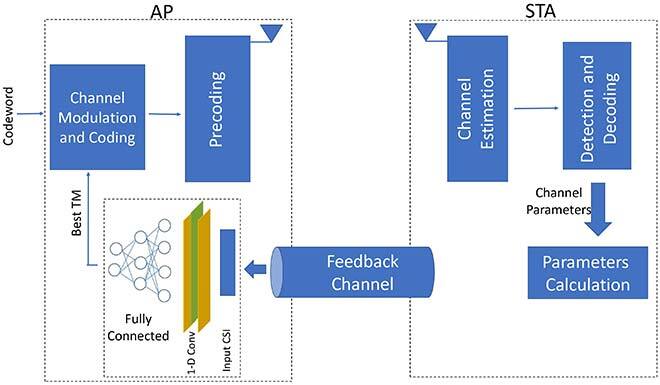
FIGURE 1. Overview for the proposed link adaptation system.
Unlike other types of wired links, wireless channels are continually changing. These changes come from different sources, such as user mobility, changing sources of interference or simply weather changes for outdoor scenarios. The dynamic nature of wireless channels imposes an array of challenges on any wireless communication system. One of these challenges is selecting transmission parameters (e.g. modulation and coding scheme (MCS), guard interval, etc.) that best suit the current channel conditions. This process is known as adaptive modulation and coding (AMC). AMC usually aims to maximize the system throughput while maintaining high system reliability measured by a given packet error rate (PER). Some of the challenges facing this process
- The number of parameter combinations is increasing as new technologies are being introduced. For example, the number of possible parameter combinations has been increased from eight combinations in IEEE 802.11b to 4000+ in IEEE 802.11ax standards.
- With MIMO systems, representing the channel itself becomes more complex and consumes a higher dimension than before.
In legacy systems, experts employed simple techniques based on lookup tables to solve the problem. These tables map the different values of signal-to-noise ratio (SNR) to the matching parameters. However, these simple techniques become very limited with the ever-increasing number of combinations. The need for powerful machine learning tools to predict the transmission parameters becomes inevitable in moving towards intelligent communication systems.
The Proposed Framework
In this work, we propose a neural network model that maps from the different channel state information (CSI) to the optimal parameter combinations, and a new modeling for the AMC problem as a multi-label multi-class classification problem. We also propose an objective function that helps the model avoid wrong predictions that may lead to packet loss and retransmissions. Fig.1 presents an overview of the proposed link adaptation system. The proposed modeling with the objective function was capable of obtaining, reliably, a near-optimal throughput performance. In the worst case, we missed the optimal throughput by only 3%.
Table 1: Outdoor test scenarios in testing the proposed system

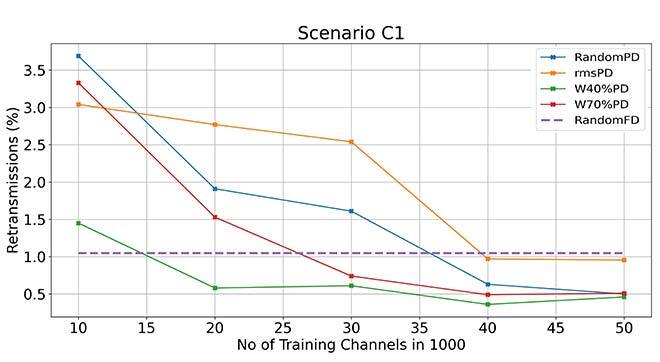
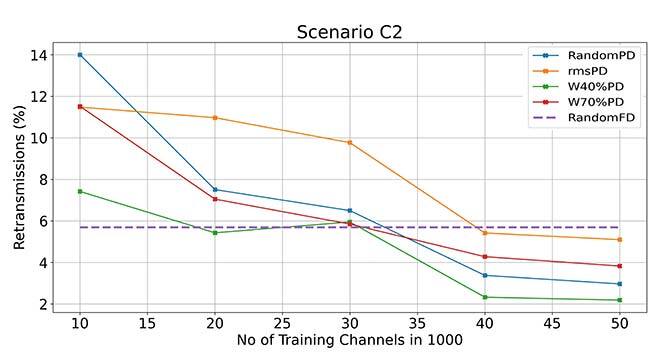
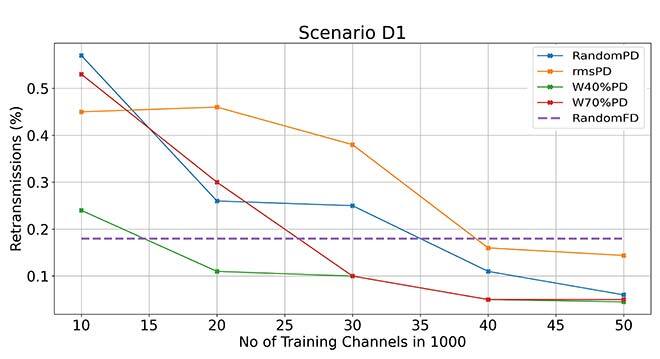
FIGURE 2. Percentage of retransmissions in each test scenario (C1, C2, and D1).
The performance of the proposed model has been validated for the IEEE 802.11ax standards under different outdoor scenarios (see table 1). In evaluating the reliability of the system, we used the number of retransmissions (i.e. equivalent to PER) as the quality of service (QoS) metric. Fig. 2 shows the percentage of retransmissions obtained using the proposed system. Note that the proposed AI model behaves reliably with less than 2% of retransmissions in the worst-case test scenario.
We plotted the percentage of retransmissions obtained by an AI model trained with traditional Crossentropy loss function, versus that obtained by the same model trained with our proposed loss function for further evaluation of the loss function. Fig. 3 shows that the model trained with our loss function outperforms the model trained with traditional Crossentropy, which means that the proposed model behaves more reliably than other legacy systems.
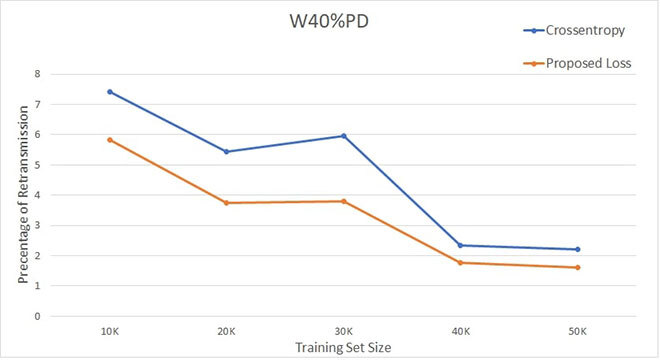
FIGURE 3. Percentage of retransmissions W40\%PD in scenario C2 for models trained with traditional crossentropy and our proposed loss function.
Conclusion
Wireless communications have a great potential for improvement using the growing power of artificial intelligence and machine learning techniques. This is one of our objectives at the ETS Synchromedia lab. In this work, we moved a step forward towards ultra-reliable high-speed wireless networks. For more information on the proposed technique, please refer to the full article “Towards More Reliable Deep Learning-Based Link Adaptation for WiFi 6,” published at the International Conference on Communications (ICC 2021).



